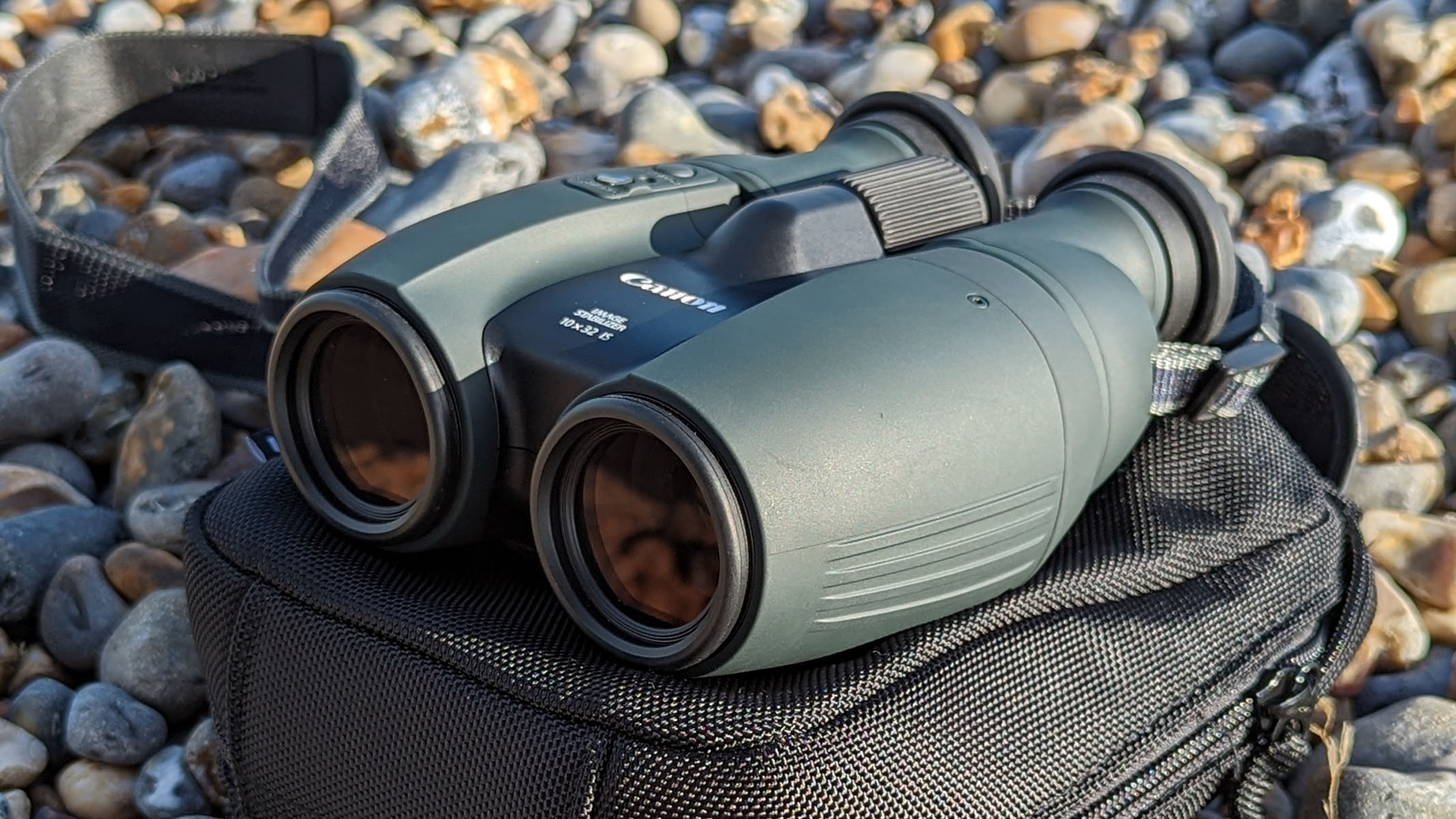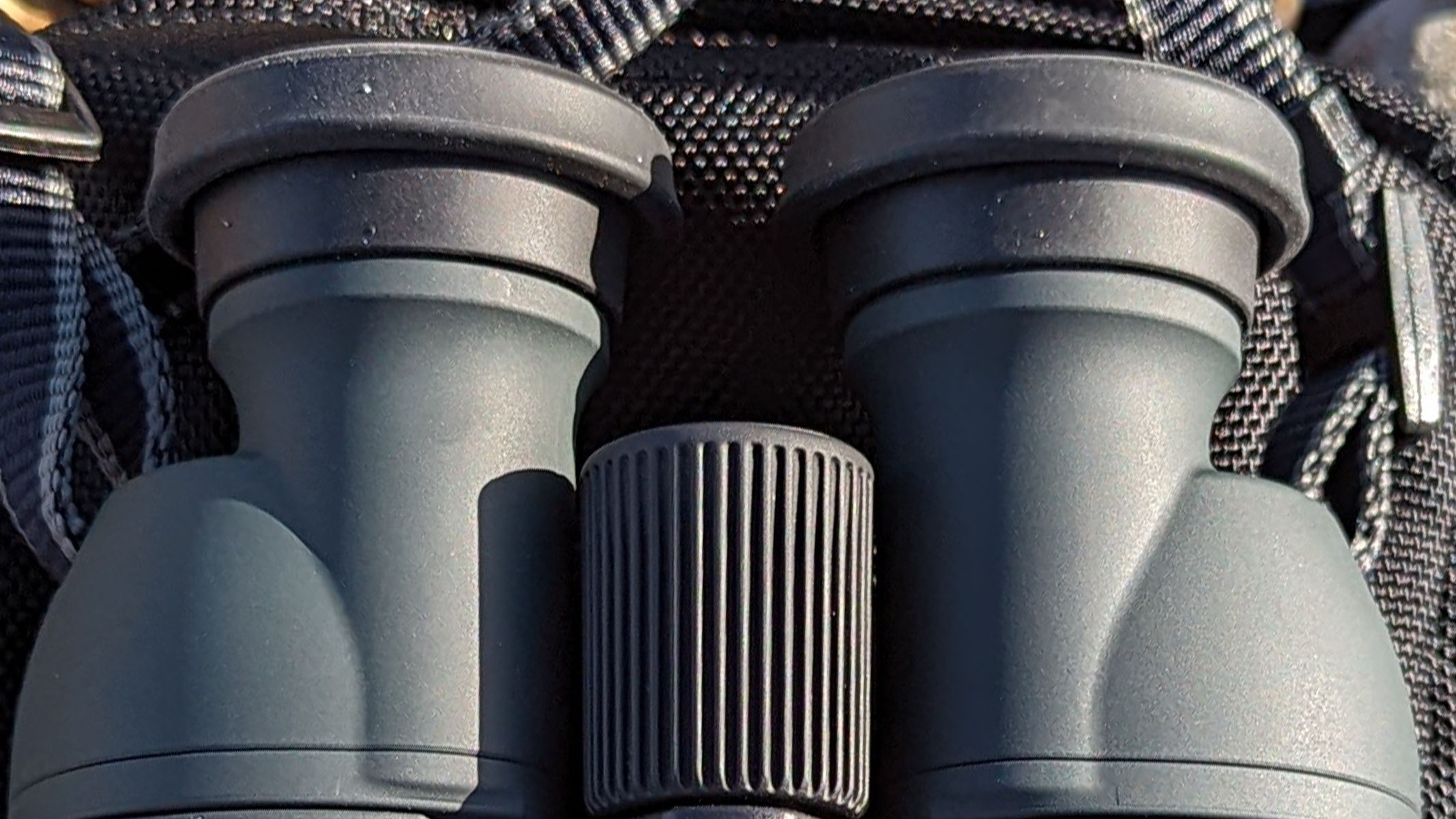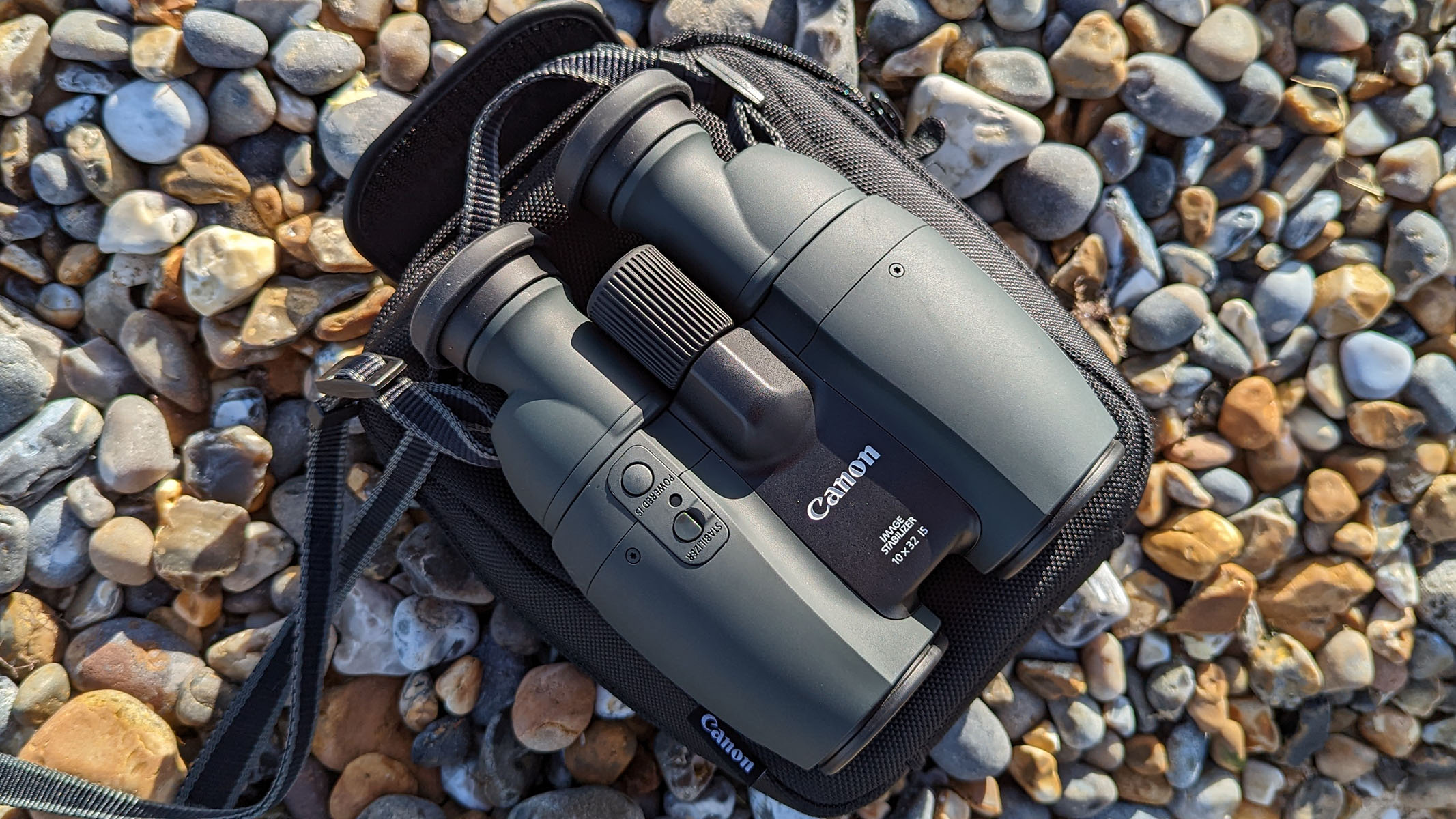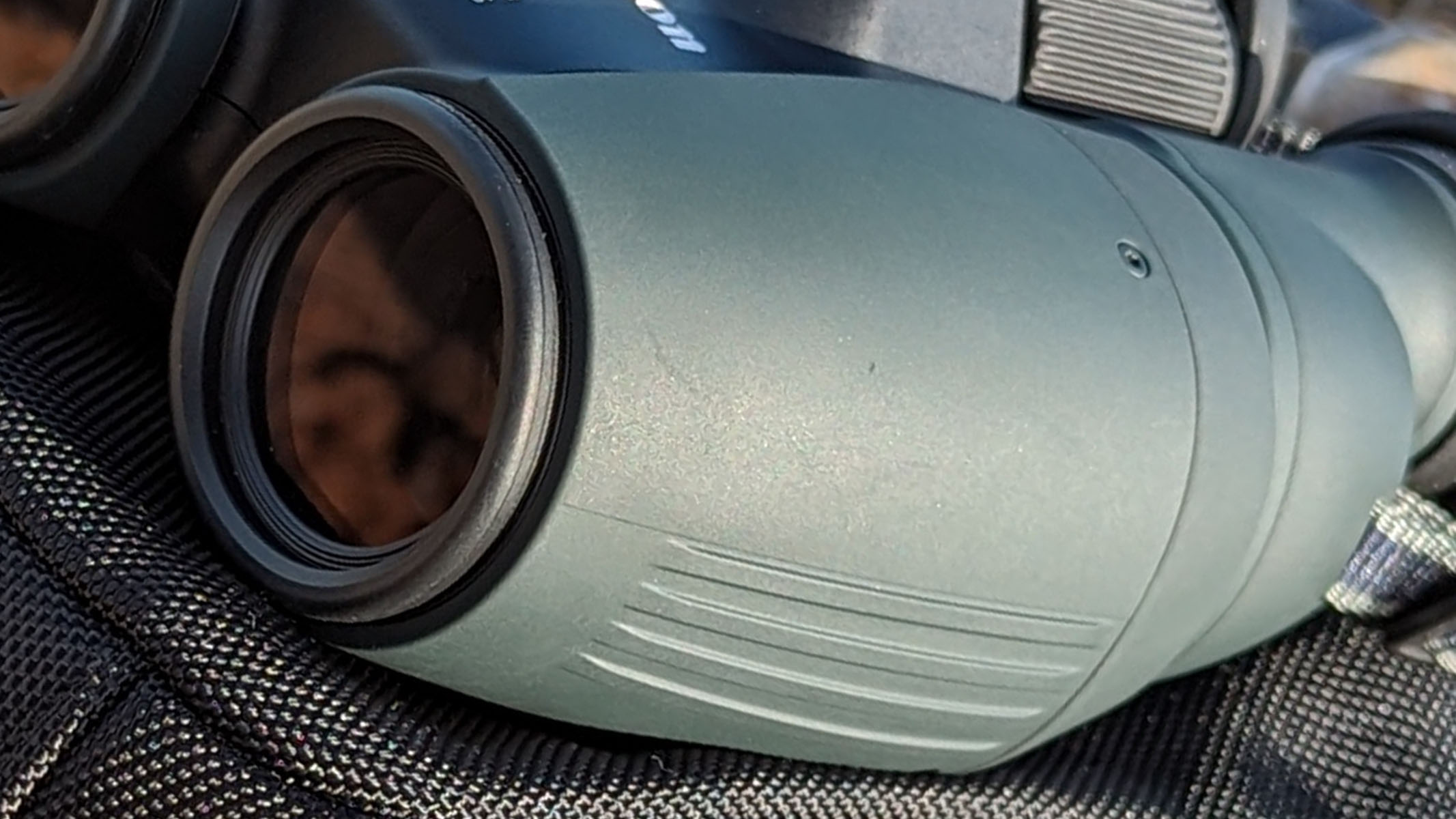Digital Camera World Verdict
Canon's image-stabilized binoculars will change the way you observe the world. They have excellent optics, give sharp views and are packed in a relatively compact offering. We’re disappointed they fog up though, so if users envisage this as a regular problem it might be worth looking elsewhere.
Pros
- +
Sharp views, good brightness
- +
Stable observation with stabilization
- +
Durable and robust
Cons
- -
No Nitrogen-purging leads to fogging
- -
Color fringing around contrasted edges
- -
Not for the budget-conscious
Why you can trust Digital Camera World
Those looking to buy the Canon 10x32 IS binoculars may be wondering if they’re worth the cost. For around $900/£1100 that’s a reasonable question, and on the face of it, these binoculars don’t look particularly special. A 10x magnification and 32mm objective lens size means they’re sat competing with a multitude of other brands and models in our best binoculars guide. Why is it then, that we’ve given them four and a half stars out of five? The magic is all in Canon's Powered Image Stabilizer system.
If you’ve ever used a pair of binoculars you’ll know just how hard it is to track subjects like birds and other wildlife, planes at an airshow, or athletes speeding around a track. Combine that with the issue of holding the binoculars steady and it becomes more difficult with higher magnifications.
Imagine though, that you held up the binoculars to your eyes and you had perfect, tripod-like steadiness the minute you look through them. That’s what using the Canon 10x32 IS binoculars is like. Combined with Porro II prism optics and a field flattener these image-stabilized binoculars give a life-like reproduction of what’s in front of you which feels intuitive to us.
Canon 10x32 IS Specifications
Design: Porro prism
Exit pupil: 3.2mm
Eye relief: 14.5mm
Weight: 780g
Magnification: 10x
Objective lenses: 32mm
Lens coating: Super Spectra Coating

Canon 10x32 IS: Key Features
Thanks to a rubberized green armor that encases the binos, they feel robust and able to withstand a good accidental knock (though we’d advise protecting them as much as possible due to the intricate electronic stabilization system). Their matte finish makes them attractive to those who like to birdwatch, spot wildlife and hunt but equally suit any kind of outdoor pursuit.
Users of traditional binoculars will find the method of adjusting the eyepieces odd. Instead of hinging the two tubes with a central hinge point, the binocular tubes remain in place and the eyepieces themselves move in semi-circles to adjust with wider or more narrow set eyes.
It feels strange at first but we quickly got used to adjusting these and we found that eyepiece collapsing wasn’t required when placing back in the carry pouch.

The image stabilization is where these binoculars come into their own. While the stabilization is good (more on that later) we were surprised to see two buttons for the IS. Switching between the two IS buttons we didn’t notice any difference when observing. It wasn’t until we read through the short paragraph in the manual did we discover that there are two modes of IS: one for stationary objects and another for moving (essentially).
Switching between the two modes is complicated and we feel this could be better improved with a switch, instead of two buttons. The order in which you press the buttons, whether one is held down while another is pressed, and the length of time the buttons are pressed all change how the IS operates. We must’ve read this part of the manual about 10 times before we fully understood and could see what was going on. It’s great to have these modes, but operating them is a little bit like giving a Rubiks cube to a chimp (at least, it was for us).
These Canon binoculars are small enough but users may be surprised to learn they weigh 27.5 oz (780g) and that’s without batteries. Fortunately, the padded neckstrap alleviates neck pain from long periods of use. Sure, you can avoid adding batteries to keep them slightly lighter, but then you forego the stabilization.
Canon 10x32 IS: Build & Handling

Powered by a couple of AA batteries (for the stabilization), unlike non-IS binoculars they can run out of energy when used. And, unless you have a spare pair of batteries the big sell feature is useless. But the binoculars do have a setting designed into the model to turn off the IS feature after 10 seconds when they’re placed in a vertical orientation.
Fogging aside, the Canon 10x32 IS binoculars are usable for a wide range of observers and circumstances. Their eyecups have rubber flanges that can be rolled back to accommodate glasses for those that wear spectacles. For anyone without glasses, the flanges in their outer position provide a comfortable rest against the eyesockets and help to block out extraneous light from shining across the eye lenses and causing flare.
As we’ve already mentioned the views through the Canon 10x32 IS binoculars are clear and sharp. Thanks to the prism design and field flattener lens elements we found observing felt natural. A magnified version of looking with the naked eye, which many binoculars don’t give as you’re keenly aware of the distortions from the glass as you observe. This is, in part, mitigated by the Super Spectra coating which negates ghosting and flaring optical issues associated with optic design.
Canon 10x32 IS: Performance

The magic of these binos is the stabilization. There are two modes, one for stabilizing on a fixed area and another for moving subjects. Turn these modes on and off independently using the buttons on the top of the binoculars and, depending on the order in which you turn them on, you’ll engage one mode or the other. It’s a bit convoluted and a rocker or a switch would probably be better here as it’ll take a few reads through the manual before you’re happy with how to use them (despite being only two buttons) but there are methods to Canon’s approach here.
The fixed stabilization mode really holds a subject steady once locked on. We could be quite wild with our movements, beyond the standard arm shake, without the view moving at all which was impressive. This makes them a joy to use while birdwatching and wildlife spotting, especially when birds are perched in trees – making it much easier to spot well-camouflaged animals. If you’ve never used a pair of binoculars with stabilization before, these will give you an enormous leg up while observing.

There are a couple of areas that we were frustrated with. Considering the price tag we would hope to see these binoculars Nitrogen-purged because when moving from a warm house or car and out into the colder winter climes in the UK we found internal fogging a nightmare.
That, plus an amount of chromatic aberration which we would only expect to see from binoculars less expensive than these Canons. Slightly more expensive models in Canon’s IS line-up are free of these niggles but the 10x32 IS’s are still fabulous binoculars.
Canon 10x32 IS: Competitors
Funnily enough, the only other pair that competes with the Canon 10x32IS binoculars is another camera manufacturer: Nikon. The Nikon Monarch HG binoculars are every bit as sharp and bright as the Canons reviewed here but they don’t suffer from the same fogging and chromatic aberration issues. The only downside of switching to the Nikon option is that there’s no image stabilization. One upside though? They’re a few hundred dollars/pounds cheaper.
If you want good sharpness and general performance at a much more reasonable price then it’s worth considering the Celestron Nature DX ED 12x50 binoculars which we’ve deemed as having high-end optics in a travel-friendly sized package. At nearly one-tenth the price of the Canon 10x32 IS, they’re not going to hit quite the same level of quality but for anyone not willing to spend over a grand on binoculars, they’re a worthy purchase.
Canon 10x32 IS: Verdict
These stabilized binoculars give a massive advantage to observers by steadying views and reproducing them faithfully to real life, only magnified. We didn’t put these down the entire time we had them in for review but there are some drawbacks that only deserve to be mentioned because of their price. Namely, chromatic aberration and lens fogging.
We don’t think these issues should be happening at this price but they do not detract from the fun of using them. If you haven’t tried IS binoculars before, you’ll never want to return them after trying them. If you can afford it and the fogging doesn’t bother you, go for this pair.
You might also like our guides on the:
• Best monoculars • Best spotting scopes • Best night vision goggles
Jase Parnell-Brookes is an award-winning photographer, educator and writer based in the UK. They won the Gold Prize award in the Nikon Photo Contest 2018/19 and was named Digital Photographer of the Year in 2014. After completing their Masters Jase has spent a good chunk of two decades studying and working in photography and optics shooting and writing all over the world for big-name brands and media outlets. Now the Channel Editor for Cameras and Skywatching at Space.com their speciality is in low light optics and camera systems.



